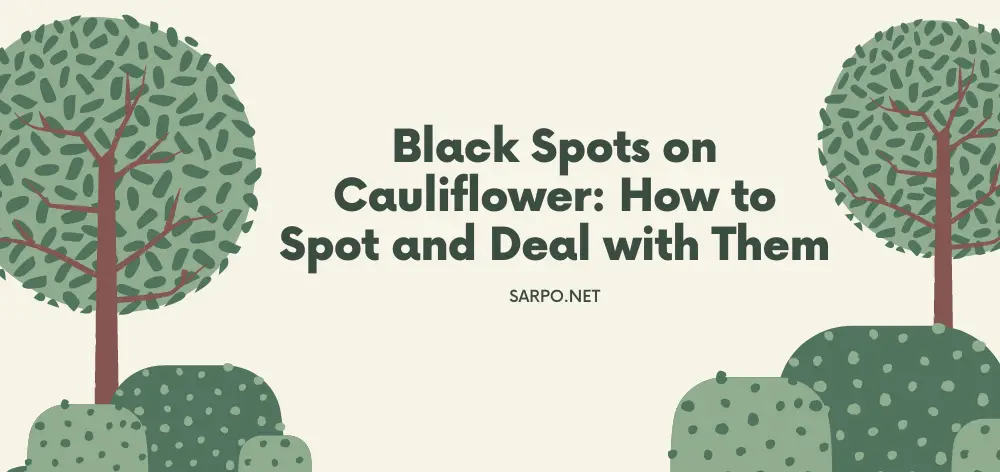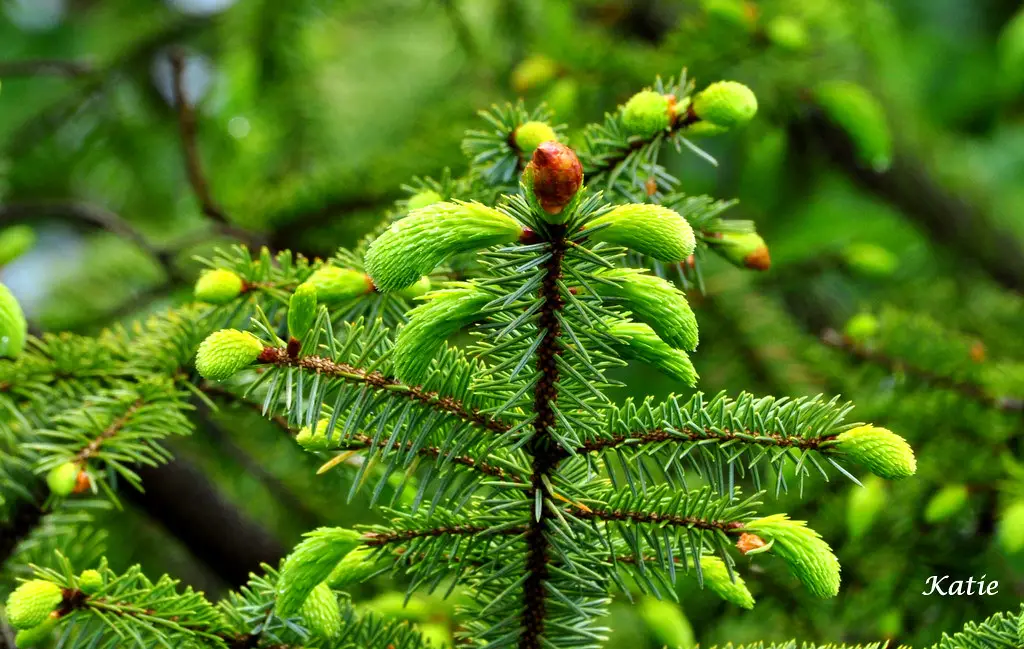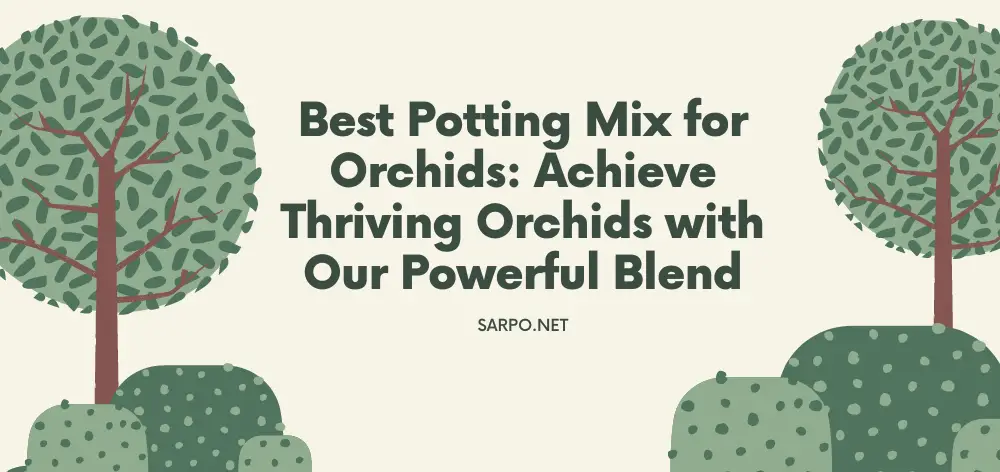
Black Spots on Cauliflower: How to Spot and Deal with Them
Black spots on cauliflower that are dark brown to black in color, mushy in texture, or have an off-putting odor indicate decay and spoilage. It is best to discard the cauliflower and get a fresh one.
Black spots on cauliflower can be quite a sight. But are they harmless or a cause for concern? Understanding what these spots really are and how to handle them is important for anyone who loves this versatile vegetable. This blog post will delve into the factual data behind those dark spots on cauliflower and learn how to spot and deal with them effectively. So, if you’ve ever questioned whether it’s safe to eat cauliflower with black spots or how to remove them, keep reading for all the answers you need.
Understanding Black Spots On Cauliflower
Black spots on cauliflower can indicate spoilage if they are dark brown to black, have a mushy texture, or emit an off-putting odor. It is best to discard the cauliflower and opt for a fresh one if these signs are present.
Have you ever encountered black spots on cauliflower and wondered what they are? Understanding the causes of these spots can help you determine whether the cauliflower is safe to eat or if it has started to decay. Let’s delve into the topic and explore the reasons behind the appearance of black spots on cauliflower.
What Are Black Spots On Cauliflower?
- Black spots on cauliflower are small areas of discoloration that appear on the surface of the vegetable.
- These spots can range in size and may be scattered or concentrated in certain areas.
- The color of the spots can vary from dark brown to black.
Why Do Black Spots Appear On Cauliflower?
- Natural aging: As cauliflower ages, its color can change, and black spots may appear.
- Bruising: Cauliflower is a delicate vegetable, and rough handling during harvesting or transportation can cause bruising, forming black spots.
- Fungal or bacterial infection: In some cases, cauliflower may develop black spots due to fungal or bacterial infection.
- Insects or pests: Infestation by insects or pests can also cause black spots on cauliflower.
Differentiating Between Harmless Spots And Signs Of Decay:
- Harmless spots: Small, isolated black spots that appear on the surface of cauliflower are usually harmless and can be trimmed away.
- Signs of decay: If the black spots are dark brown to black, the texture of the cauliflower has become mushy, or there is an unpleasant odor, it indicates that the cauliflower has started to decay and should not be consumed.
Remember, when it comes to black spots on cauliflower, it’s important to examine the extent of the discoloration and other signs to determine if the vegetable is still safe to eat. Knowing the difference between harmless spots and signs of decay ensures you make the right decision regarding cauliflower consumption.
Identifying Black Spots On Cauliflower
If you notice black spots on cauliflower that are dark brown to black and have a mushy texture or off-putting odor, it’s best to discard the head of cauliflower as these are signs of decay and spoilage. Ensure the cauliflower you consume is fresh and in good condition to avoid health risks.
It’s not uncommon to find black spots on the surface regarding cauliflower. These spots can indicate various factors such as physical appearance, color variations, and texture changes. This section will delve into each aspect to help you identify and understand black spots on cauliflower.
Physical Appearance Of Black Spots
- Black spots on cauliflower can appear as small dots or larger patches on the surface of the vegetable.
- These spots may be dark brown to black, contrasting with the cauliflower’s white or light cream color.
- The spots can be raised or slightly recessed, depending on the underlying cause.
- They might have a smooth or rough texture, indicating different issues.
Color Variations Of Black Spots
- Black spots on cauliflower can vary in color, ranging from dark brown to black shades.
- Some spots might have a more solid color, while others could be mottled or speckled.
- The intensity of the color can also vary, with some spots being very dark and others appearing lighter.
Texture Changes In Cauliflower
- Cauliflower with black spots may experience texture changes.
- The affected areas might feel softer or mushy compared to the surrounding healthy parts.
- The texture can vary depending on the underlying cause of the black spots.
- Sometimes, the texture change might be accompanied by an unpleasant odor.
Remember, if you notice black spots on cauliflower, it’s vital to assess the physical appearance, color variations, and texture changes to determine if the vegetable is still safe to eat.
Reasons For Black Spots On Cauliflower
If you notice black spots on cauliflower, it may signify decay and spoilage. It’s best to discard the cauliflower if the sites are dark brown to black, accompanied by a mushy texture or off-putting odor.
Cauliflower is a nutritious and versatile vegetable that can be enjoyed in various ways. However, black spots on cauliflower can be a cause for concern. These spots can indicate some factors, including fungal and bacterial infections, environmental factors, or other potential causes.
Let’s explore these reasons in more detail:
Fungal And Bacterial Infections:
- Fungal infections: Cauliflower can be prone to fungal infections, such as black rot (caused by the fungus Alternaria brassicae). This fungus typically infects the leaves and stems of the plant but can also affect the curds, leading to black spots.
- Bacterial infections: Bacterial diseases like black leg (caused by the bacterium phone lingam) can also affect cauliflower. These infections can cause black spots on the curds and other plant parts.
Environmental Factors Causing Black Spots:
- Sunburn: Excessive exposure to sunlight can cause sunburn on cauliflower, leading to black spots.
- Temperature extremes: Extreme temperatures, both hot and cold, can stress the cauliflower plant, causing black spots to develop on the curds.
- Moisture levels: High humidity or excess moisture can create a favorable environment for fungal and bacterial growth, resulting in black spots.
Other Potential Causes Of Black Spots On Cauliflower:
- Physical damage: Rough handling during transportation or storage can cause bruising, leading to black spots on cauliflower.
- Pests: Certain pests, like aphids and caterpillars, can damage cauliflower plants, making them more susceptible to infections that cause black spots.
- Disease-prone varieties: Some cauliflower varieties are more prone to developing black spots than others. Choosing disease-resistant types can help minimize the risk.
Remember, if you encounter cauliflower with black spots that are dark brown to black, have a mushy texture, or emit an off-putting odor, it’s best to discard the cauliflower as it may be spoiled.
Preventing Black Spots On Cauliflower
To prevent black spots on cauliflower, inspecting the vegetable before purchasing is important. If the spots are dark brown to black, the cauliflower is likely spoiled and should be discarded.
Tips For Selecting Fresh Cauliflower:
- Look for cauliflower heads that are firm and compact, with no soft spots or browning.
- The leaves should be fresh and green, not wilted or yellow.
- Avoid cauliflower with black spots or discoloration, as these are signs of decay.
- Choose heads that are of a consistent color, whether it’s white, purple, or green.
- Smell the cauliflower to ensure no off-putting odors, which could indicate spoilage.
Proper Storage Techniques For Minimizing Black Spots:
- Remove any leaves from the cauliflower head before storing them, as they can trap moisture and lead to spoilage.
- Place the cauliflower in a perforated plastic bag or a loosely wrapped paper towel to allow air circulation.
- Store cauliflower in the vegetable crisper drawer of your refrigerator, ideally at a temperature between 32°f and 36°f (0°c and 2°c).
- Avoid storing cauliflower near fruits such as apples or bananas, as they release ethylene gas, which can accelerate spoilage.
- Use cauliflower within 5-7 days of purchase to maintain its freshness and minimize the risk of black spots.
Applying Preventive Measures In The Garden:
- Choose cauliflower varieties less prone to black spotting, such as snow crowns or candid charm.
- Plant cauliflower in well-drained soil that is rich in organic matter.
- Ensure adequate spacing between cauliflower plants to promote air circulation and prevent moisture buildup.
- Water cauliflower plants profoundly and consistently, ensuring the soil remains evenly moist but not soggy.
- Monitor cauliflower plants regularly for signs of pest infestation, as insects can damage the cauliflower heads and contribute to black spots.
Remember, by following these tips for selecting fresh cauliflower, proper storage techniques, and applying preventive measures in the garden, you can reduce black spots and enjoy fresh, tasty cauliflower without any spoilage.
Know more about Air Plants and Tree air ventilation:
Dealing With Black Spots On Cauliflower
If you notice black spots on cauliflower, it’s best to discard it if the spots are dark brown to black, have a mushy texture, or emit an off-putting odor. These signs indicate decay and spoilage.
Cauliflower is a versatile and nutritious vegetable loved by many. However, you may see black spots on cauliflower, which can be slightly off-putting. But don’t worry; there are ways to salvage cauliflower with minor black spots and even alternative uses for heavily affected cauliflower.
Let’s dive into the steps to deal with these black spots effectively.
Steps To Salvage Cauliflower With Minor Black Spots:
- Inspect the cauliflower: Before proceeding, thoroughly examine the cauliflower for signs of spoilage. If the spots are dark brown to black and the curds have a mushy texture or an unpleasant odor, it’s best to discard the cauliflower.
- Trim the affected areas: If the black spots are minor and don’t indicate spoilage, you can salvage the cauliflower by trimming away the affected areas. Use a sharp knife to carefully cut out the black spots, ensuring you remove any surrounding discolored tissue as well.
- Rinse the cauliflower: After trimming, rinse the cauliflower under cold running water to remove any debris or loose particles.
- Cook or freeze promptly: Once the cauliflower is trimmed and clean, you can proceed with your favorite cauliflower recipe, blanch it briefly, and freeze it for future use.
Following these steps, you can salvage cauliflower with minor black spots and enjoy its deliciousness without any concerns.
Methods For Removing And Discarding Heavily Affected Cauliflower:
- Discard heavily affected cauliflower: If the cauliflower head has significant black spots, a mushy texture, or an off-putting odor, it’s best to play it safe and discard the entire head.
- Prevent cross-contamination: Handle the affected cauliflower separately from other fresh produce to avoid spreading potential spoilage. Clean and sanitize any cutting boards or utensils used during the process.
- Proper disposal: To prevent potential health risks, wrap the discarded cauliflower in a plastic bag before disposing it in the garbage bin.
Remember, your health and safety are paramount, so it’s crucial to exercise caution when dealing with heavily affected cauliflower.
Alternative Uses For Cauliflower With Black Spots:
- Vegetable broth: If the cauliflower has minor black spots but is otherwise fine, you can use it to make a flavorful vegetable broth. Simmer the cauliflower and other vegetables, herbs, and spices to create a nutritious base for soups, stews, and sauces.
- Composting: Add the heavily affected cauliflower to your compost pile if you’re into gardening or composting. As it decomposes, it will contribute to nutrient-rich soil for your plants.
- Feeding animals: In some cases, chickens or pigs can still safely consume heavily affected cauliflower. Before offering cauliflower, research the animals’ specific dietary needs and restrictions.
These alternative uses provide a sustainable way to make the most out of cauliflower with black spots, reducing food waste and maximizing its potential.
Now that you know how to deal with black spots on cauliflower, you can confidently handle and make the most of this delicious vegetable.
Are Black Spots on Cauliflower a Sign of Aphid Infestation?
When you notice black spots on cauliflower, it could indicate an aphid infestation. To identify and prevent aphids on Christmas trees, it’s important to regularly inspect the plants for signs of infestation, such as black spots or sticky honeydew residue. Taking preventive measures can help protect your crops from damage.
Frequently Asked Questions
Is Cauliflower With Black Spots Safe To Eat?
Cauliflower with dark brown to black spots, mushy texture, or an off-putting odor should be discarded. These are signs of decay and spoilage. It is best to get a fresh head of cauliflower if you notice these characteristics.
Are Black Spots On Vegetables Safe To Eat?
If the black spots on vegetables are dark brown to black, have a mushy texture, or emit an off-putting odor, it is best to discard the vegetables as they may be decayed and spoiled. However, if the black spots are superficial and the vegetable appears otherwise fresh, they are safe to eat.
Dark spots on fruits and vegetables may look unappetizing, but they are perfectly edible. These spots are usually caused by natural pigments or oxidation and do not affect the nutritional value or taste of the vegetable. It’s important to scrutinize vegetables and use your judgment to determine if they are safe to consume.
How Do You Know If Cauliflower Has Gone Bad?
Cauliflower has gone wrong if it has dark brown to black spots, a mushy texture, or an off-putting odor.
How Do You Keep Cauliflower From Getting Black Spots?
To keep cauliflower from getting black spots, follow these simple steps:
- Choose fresh and healthy cauliflower heads from the store, ensuring they are firm and without any visible spots or blemishes.
- Store cauliflower in the fridge in a perforated plastic bag or open container to allow air circulation.
- Avoid washing cauliflower before storing, as moisture can encourage the growth of black spots.
- Inspect the cauliflower periodically and remove any small black spots that may appear using a knife, ensuring that it does not cut into the healthy flesh.
- Cook cauliflower promptly to prevent further deterioration. By following these guidelines, you can maintain the freshness and quality of cauliflower, reducing the likelihood of black spots.
Conclusion
If you find black spots on your cauliflower, it’s essential to determine whether they are safe to eat. While pale brown spots are usually harmless, black spots may indicate spoilage and decay. If the spots are dark brown to black, the texture of the cauliflower has become mushy, or if there is an off-putting odor, it’s best to discard the cauliflower and get a fresh one.
These are all signs that the cauliflower has gone wrong. It’s always better to err on the side of caution when consuming perishable foods. Remember, cauliflower is a versatile and nutritious vegetable that can be enjoyed in various dishes, so it’s worth getting a fresh and healthy head to avoid any potential health risks.
Related Topics
10 Best Small Evergreen Trees with Non Invasive Roots
 Dr Ahsanur Rahman, PHD
Dr Ahsanur Rahman, PHDPine Tree Rescue: Saving Pine Trees with Brown Needles
 Dr Ahsanur Rahman, PHD
Dr Ahsanur Rahman, PHD






